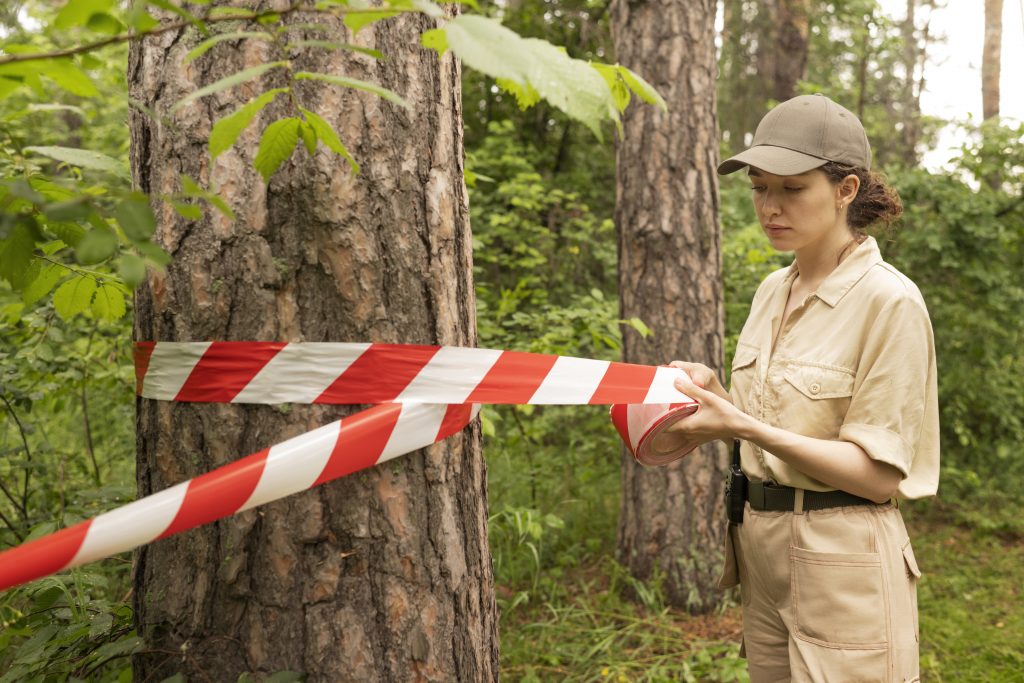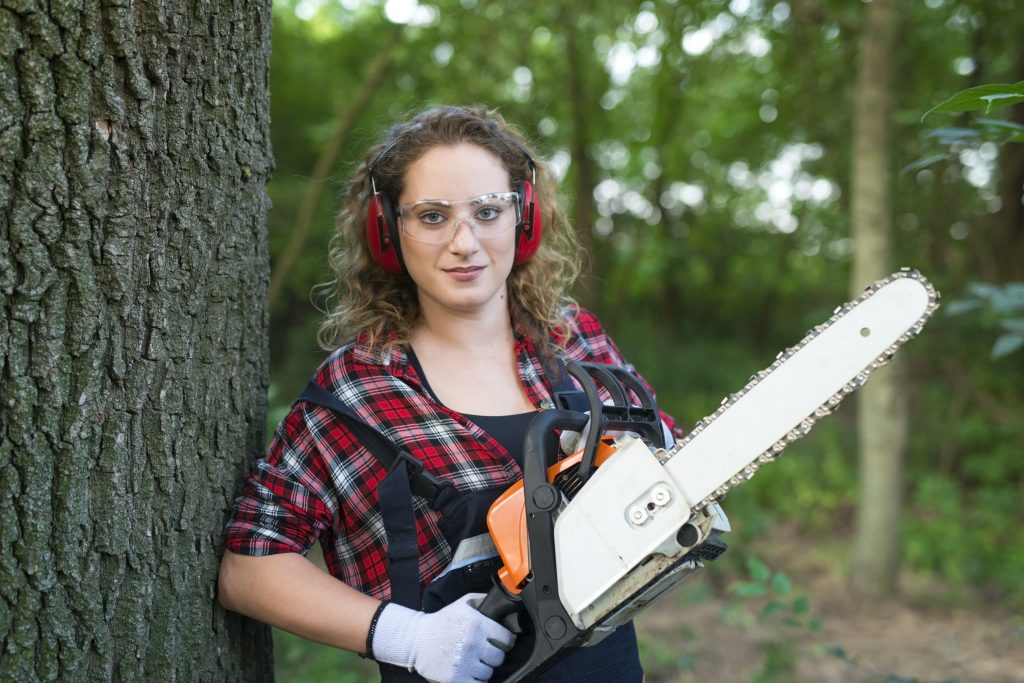COMMON QUESTIONS ABOUT EMERGENCY TREE SERVICES
COMMON QUESTIONS ABOUT EMERGENCY TREE SERVICES

Emergency tree services refer to the specialized assistance provided by professional arborists and tree care experts to address urgent and potentially hazardous situations involving trees. These services are designed to quickly and safely manage situations where trees pose an immediate threat to property, people, or the surrounding environment. Emergency tree services are crucial for ensuring the safety of individuals and minimizing property damage during unexpected tree-related incidents.
Examples of situations that may require emergency tree services include:
1. Fallen Trees: Trees that have fallen due to storms, high winds, or other factors can block roads, damage structures, and pose a danger to people and property.
2. Hanging or Split Branches: Broken or cracked branches that are still attached to a tree can fall at any moment, endangering anyone beneath them.
3. Leaning Trees: Trees that are leaning precariously may be at risk of falling, especially during storms or when the soil is saturated.
4. Uprooted Trees: Trees with exposed roots due to uprooting can destabilize the tree and pose a risk to nearby structures and individuals.
5. Trees Near Power Lines: Trees entangled with power lines can create a hazardous situation, potentially causing power outages and fires.
6. Trees Damaged by Storms: Severe weather conditions, such as hurricanes or tornadoes, can cause significant damage to trees and require immediate attention.
Emergency tree services typically involve the following steps:
1. Safety Assessment: Arborists will assess the situation to determine the level of danger and potential risks associated with the tree emergency.
2. Immediate Response: If the situation poses an imminent threat, professionals will respond promptly to mitigate the risk. This may involve removing or trimming branches, stabilizing the tree, or removing the tree altogether.
3. Specialized Equipment: Arborists use specialized equipment, such as cranes, chainsaws, and rigging systems, to safely and efficiently handle emergency tree situations.
4. Controlled Removal: In cases where a tree needs to be removed, professionals will carefully plan and execute the removal process to minimize the impact on the surrounding area.
5. Cleanup and Restoration: After the emergency has been resolved, debris and other remnants will be cleared from the site, and if necessary, restoration work will be undertaken to repair any damage caused.
Emergency tree services play a crucial role in maintaining public safety and preventing further damage to property and infrastructure. It’s important for property owners to be proactive in identifying potential tree hazards and to engage the services of certified arborists when faced with emergency situations involving trees.
Purpose Of Emergency Tree Services
The purpose of emergency tree services is to address urgent and potentially dangerous situations involving trees in order to ensure the safety of people, property, and the surrounding environment. These services are designed to respond promptly to tree-related incidents that pose an immediate threat, such as fallen trees, hanging branches, or uprooted trees, particularly in the aftermath of storms, severe weather, accidents, or other unforeseen events. The primary goals and purposes of emergency tree services include:

Professional lumberjack in the forest cutting an oak trunk with chainsaw.
1. Public Safety: The safety of individuals and the public is the foremost objective of emergency tree services. Trees that are damaged, unstable, or at risk of falling can pose significant dangers to people, vehicles, buildings, and utility lines. Emergency tree services work to mitigate these risks by promptly addressing hazardous situations.
2. Property Protection: Trees that have fallen or are in danger of falling can cause extensive damage to structures, vehicles, and other property. Emergency tree services aim to prevent or minimize property damage by quickly removing or stabilizing compromised trees.
3. Traffic Flow: Fallen trees or branches can obstruct roadways, creating traffic hazards and disruptions. Emergency tree services help clear roads and highways, allowing for safe and efficient traffic flow.
4. Utility Line Safety: Trees entangled with power lines or utility cables can lead to power outages, fires, and other hazards. Quick response from emergency tree services helps prevent these issues by safely removing or trimming trees that pose risks to utility lines.
5. Mitigating Further Damage: Addressing emergency tree situations promptly can prevent secondary damage. For instance, a partially fallen tree might cause more harm if left unattended, and hanging branches could fall and cause additional destruction.
6. Environmental Preservation: Emergency tree services also consider the health of the environment. By addressing tree emergencies efficiently, the risk of invasive pests or diseases spreading from a damaged tree to healthy ones can be reduced.
7. Expertise and Equipment: Certified arborists and tree care professionals possess the expertise and specialized equipment necessary to handle emergency situations safely and effectively. They are trained to assess risks, make informed decisions, and execute tree removal or stabilization procedures without causing further harm.
8. Insurance Claims: In cases where property damage occurs due to fallen trees or branches, documentation of the emergency tree services and their actions can be crucial for insurance claims.
9. Community Resilience: Timely response to tree-related emergencies contributes to community resilience by maintaining essential services, ensuring public safety, and reducing disruptions caused by fallen trees.
10. Preventive Education: Emergency tree services also educate property owners about tree care and maintenance practices that can help prevent future tree-related emergencies. This includes guidance on regular tree inspections, pruning, and proper planting.
Importance of addressing tree emergencies promptly
Addressing tree emergencies promptly is of paramount importance due to the potential risks and consequences associated with unresolved hazardous tree situations. The urgency stems from the fact that trees can pose immediate dangers to people, property, and the environment when they are compromised or unstable. Here’s why addressing tree emergencies promptly is crucial:
1. Public Safety: The safety of individuals, pedestrians, and nearby structures is the top concern. Unstable or fallen trees can injure or even fatally harm people who are in their vicinity. Prompt action helps prevent accidents and injuries.
2. Property Protection: Fallen trees, hanging branches, or uprooted trees can cause extensive damage to homes, vehicles, fences, and other structures. Swift intervention can minimize the extent of property damage and associated repair costs.
3. Risk Mitigation: Immediate attention to tree emergencies reduces the likelihood of secondary damage. For example, a partially fallen tree could cause more destruction if it collapses completely. By addressing the issue promptly, further harm can be prevented.
4. Traffic Flow: Fallen trees or branches can obstruct roadways, leading to traffic congestion and accidents. Timely removal of these obstacles helps maintain safe traffic flow and prevents additional disruptions.
5. Utility Line Safety: Trees entangled with power lines or utility cables pose a risk of power outages, fires, and other electrical hazards. Addressing such situations quickly helps prevent these potentially dangerous scenarios.
6. Environmental Considerations: Diseased or damaged trees can spread pests or diseases to healthy trees, impacting the local ecosystem. Swift removal can help prevent the further spread of these issues.
7. Emergency Preparedness: By promptly resolving tree emergencies, communities can demonstrate their preparedness and ability to manage unexpected incidents, contributing to overall resilience.
8. Insurance Claims: For situations where property damage occurs, documenting the actions taken by emergency tree services is essential for insurance claims. This documentation can facilitate smoother and more accurate claims processing.
9. Preventing Legal Liability: Property owners have a legal responsibility to maintain safe conditions on their property. Failing to address a known hazardous tree situation could result in legal liability if it leads to injuries or damage.
10. Preserving Landscape Aesthetics: Trees contribute to the aesthetic appeal of neighborhoods and landscapes. Swift action to address tree emergencies can help maintain the visual appeal of an area by preventing unsightly damage.
11. Timely Restoration: After an emergency is addressed, the process of cleanup and restoration can begin sooner, minimizing disruptions and allowing the affected area to return to normal more quickly.
12. Community Cohesion: Addressing tree emergencies promptly demonstrates a community’s commitment to the safety and well-being of its residents. It fosters a sense of unity and shared responsibility among community members.
Safety considerations when dealing with tree-related emergencies
Dealing with tree-related emergencies requires careful attention to safety to prevent further harm or accidents. Here are important safety considerations to keep in mind:
1. Personal Safety First: Always prioritize personal safety and the safety of others. Do not attempt to handle a hazardous tree situation if you are not trained or equipped to do so.
2. Assess the Situation: Evaluate the extent of the tree emergency from a safe distance. Determine whether there are immediate dangers, such as hanging branches or unstable trees.
3. Evacuate if Necessary: If a tree has fallen on a structure or poses an immediate danger, evacuate the area and keep a safe distance until professionals arrive.
4. Stay Clear of Power Lines: If a tree is entangled with power lines, stay far away from the area. Power lines can conduct electricity, even if they appear inactive.
5. Use Caution Around Damaged Trees: Even seemingly stable trees may have hidden weaknesses. Do not assume a tree is safe to approach or touch.
6. Call Professionals: Contact emergency tree service professionals or arborists who are trained to handle tree-related emergencies safely and effectively.
7. Warn Others: If a hazardous tree situation is on public property, such as a road, trail, or sidewalk, alert others to the potential danger to prevent accidents.
8. Avoid Walking Under Hanging Branches: Hanging or partially detached branches can fall unexpectedly. Avoid walking or standing under such branches.
9. Secure Pets: Keep pets away from the area to prevent them from being injured or causing further complications.
10. Stay Informed about Weather Conditions: Inclement weather can further destabilize compromised trees. Be aware of weather forecasts to anticipate potential risks.
11. Wear Safety Gear: If you’re attempting to manage a minor tree emergency yourself, wear appropriate safety gear, including sturdy gloves, eye protection, and a hard hat.
12. Use Proper Tools: If using tools, such as a chainsaw, ensure you are trained and using the equipment correctly. Follow safety guidelines and recommendations.
13. Work with a Partner: If you must undertake any actions around a hazardous tree, work with a partner who can provide assistance and help ensure your safety.
14. Communicate Clearly: If you’re working with emergency professionals, provide clear and accurate information about the situation and any hazards you’ve identified.
15. Stay Calm: In high-stress situations, maintaining a calm demeanor is essential for making safe decisions and taking appropriate actions.
16. Document the Scene: If possible, take photographs or videos of the emergency for documentation purposes, especially if there is damage to property.
17. Follow Local Regulations: Be aware of any local regulations or guidelines for managing tree-related emergencies, as well as any permits required for tree removal.
18. Stay Updated: Follow instructions and updates from emergency responders, utility companies, and professionals to ensure your actions align with their recommendations.
